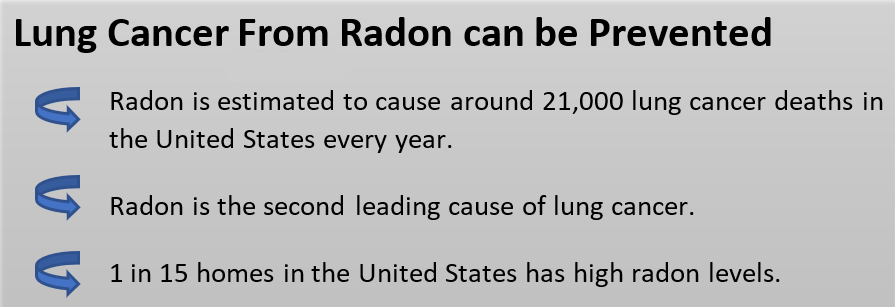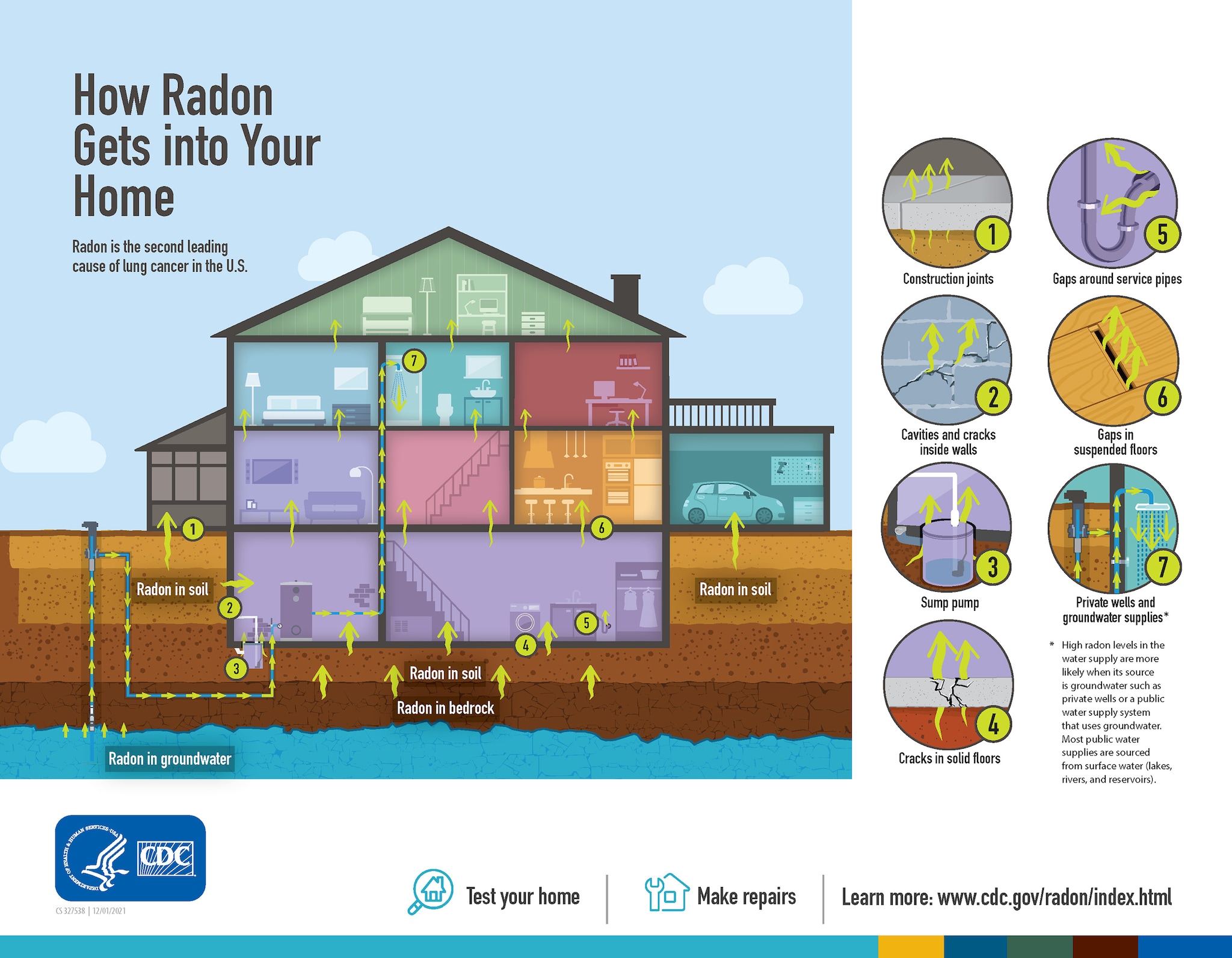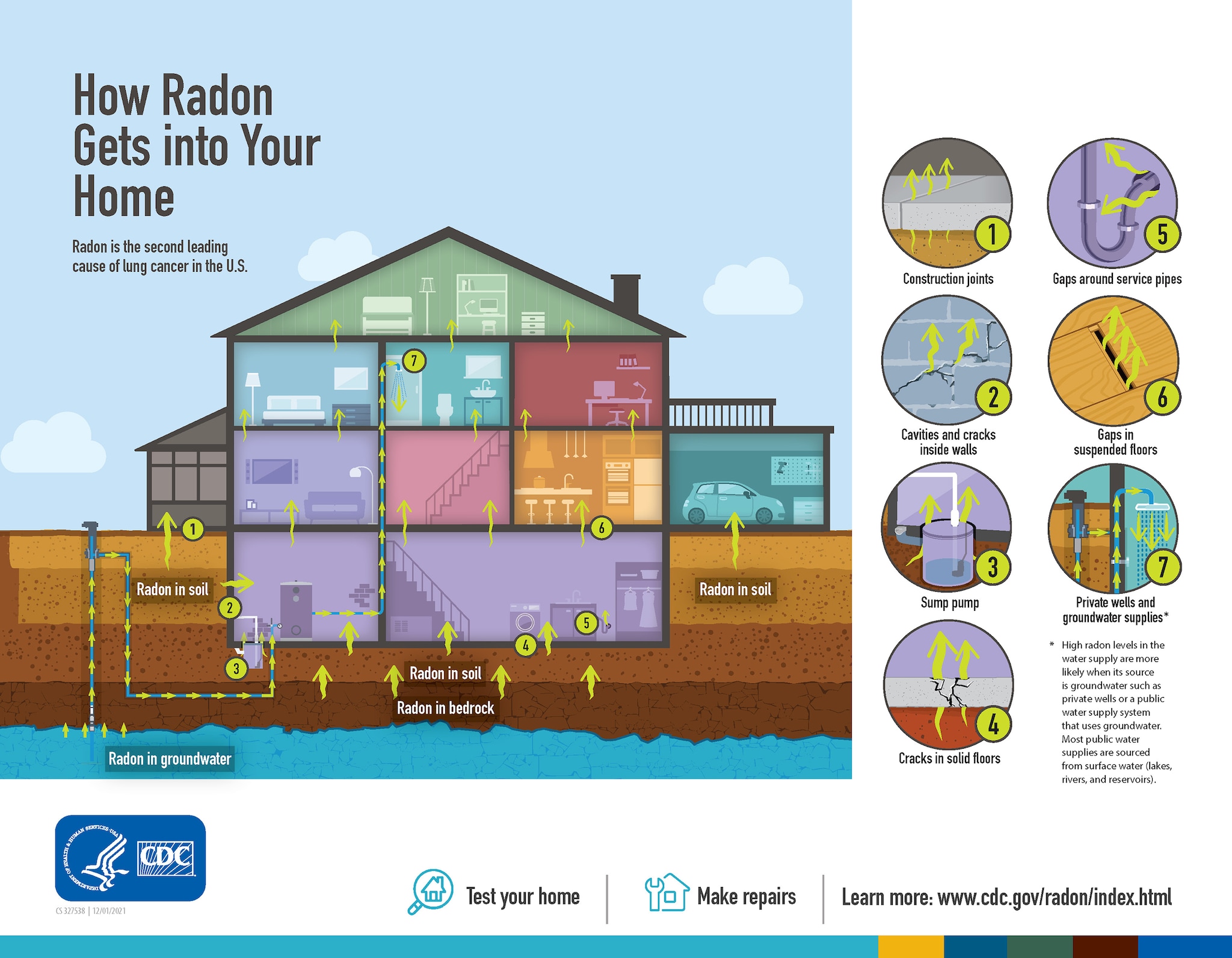CDC Environmental Health Nexus Newsletter
Healthy Environment, Healthy You
January 10, 2022 | Volume 7

Environmental News Nexus
CDC’s Environmental Health Nexus (EH Nexus) shares environmental health messages with the public and gives special attention to environmental justice.
EH Nexus newsletters provide info about environmental health issues and offers information that promotes actions to help save lives. Each newsletter will communicate how to reduce harm from many threats, including climate change, contaminated food and water, toxic environments, and inadequate systems and practices.
This issue covers the following topics:
- Upcoming Webinar on Radon
- What is Radon?
- National Radon Action Month
- CDC’s Radon Awareness Week, January 24-28
- High Radon Levels in the Home
- Radon Can Cause Lung Cancer
- Radon and Drinking Water from Private Wells
- Environmental Health Updates and Resources
If the newsletter was emailed to you, we thank you for joining our subscription distribution list. If you are not a subscriber, please click here, enter your email address, and click the subscribe button.
EH Nexus Webinar for Radon Awareness Week
EH Nexus will host their next webinar on radon to kick off CDC’s 2022 Radon Awareness Week, observed on January 24–28.
During this EH Nexus webinar, you will learn about radon, how it can impact your health, and what individuals, communities, and healthcare providers can do to prevent lung cancer from radon. The webinar will open with a video testimonial of a radon-associated lung cancer survivor and her surgeon. Subject matter experts, Dr. Adela Salame-Alfie from CDC’s Radiation Studies Section, Dr. Thomas Golden from CDC’s Office on Smoking and Health, and Dr. Bill Field from the University of Iowa and author of the new guide for healthcare providers, will highlight the following topics:
• Basic information on radon and how to test for and reduce radon in your home.
• The combined risk of radon and cigarette smoking, including second-hand smoke.
• A deep dive into data and guidance for healthcare providers.
Participants will have about 15 minutes to ask questions at the end of the webinar.
This special webinar will broadcast on Monday, January 24, from 1:00–2:00 p.m. ET via Zoom.
To register for this event, please visit Webinar Registration – Zoom (zoomgov.com)external icon. Closed captioning will be available.
Visit the Environmental Health Nexus website for more details.
What is Radon?
Radon is an odorless and invisible radioactive gas naturally released from rocks, soil, and water. In outdoor environments, radon levels are very low and generally not considered harmful, but radon can enter homes and buildings in small cracks and holes and build up to higher levels. Because there is no known safe level of exposure to radon, EPA also recommends that Americans consider fixing their home for radon levels between 2 picocuries per liter (pCi/L) and 4 pCi/Lexternal icon.
Over time, breathing in high levels of radon can cause lung cancer.
National Radon Action Month

Each January, CDC joins the Environmental Protection Agency (EPA), the Department of Housing and Urban Development, and other partner organizations like the Conference of Radiation Control Program Directors (CRCPD) and the American Lung Association to observe National Radon Action Month. The Radon Leaders Saving Lives Campaign, hosted by CRCPD, provides an Event Planning Kitexternal icon made in collaboration with EPA, with planning guidance, a presentation, and outreach materials for use in your community.
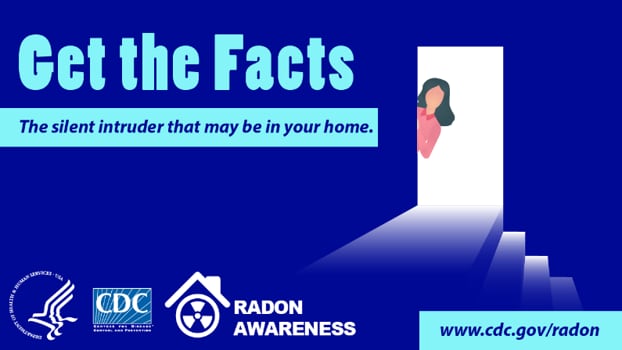
To close out the month of national and community radon action, CDC recognizes the last week of January as Radon Awareness Week, with a special focus each day on a public health theme. CDC’s 2022 Radon Awareness Week raises awareness about the combined risk of smoking and radon, shares information about state radon levels and resources, and informs and empowers homeowners, healthcare providers, and school building managers on steps they can take to reduce risks.
Visit CDC’s 2022 Radon Awareness Week webpage for images and messages to help spread, including through social media.
Sign up for the Radiation and Health Newsletter for daily updates and to stay informed about radon and other radiation topics throughout the year.
High Radon Levels in the Home
Aiming for the lowest radon level you can achieve in your home will reduce your risk of harmful health effects, including lung cancer. You and your family could be at risk for lung cancer from radon, so get your home tested to see its radon levels.
All outdoor and indoor air has some radon in it. Radon can build up in the air in any home or building, whether it has a basement, is sealed or drafty, or is new or old. Testing your home is the only way to know if radon levels are high. Here are steps you can take to measure and reduce radon levels.
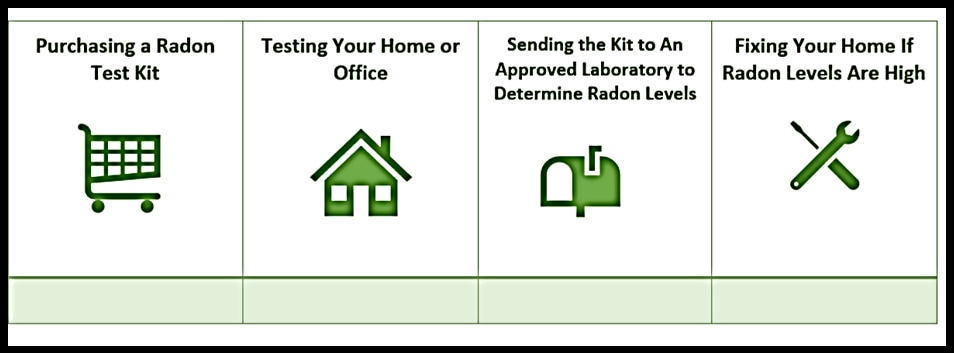
CDC provides information on testing and reducing radon in your home. Contact your state radon control officeexternal icon for resources and help finding a qualified radon reduction contractor.
Radon Can Cause Lung Cancer
When you breathe in radon, radioactive particles from the decay of radon gas can get trapped in your lungs. It takes many years for lung cancer to develop. Most people don’t have symptoms until lung cancer is advanced, and at that point it is harder to treat. For these reasons, it is important to take steps to reduce radon exposure throughout your life to help prevent lung cancer.
The risk of lung cancer from radon exposure is higher for people who smoke than for people who don’t smoke. EPA estimatesexternal icon that more than 10% of radon-related lung cancer deaths occur among people who have never smoked cigarettes.
Factors that increase your risk of getting lung cancer from radon include the following:
- High radon levels in your home or another building that you regularly spend time in
- High radon levels in the part of the home or building where you spend the most time (Radon levels are often higher in basements and lower levels.)
- Burning wood, coal, or other substances that add particles to air
- Smoking cigarettes, currently or in the past
Call 1-800-QUIT-NOW or visit CDC’s quit smoking website for free support and resources to help you quit smoking.
Radon and Drinking Water From Private Wells
Radon can build up in water from underground sources (groundwater). Radon is not a concern in water from lakes, rivers, and reservoirs (called surface water). Groundwater is the source used in private wells and in some public water supplies.
While most radon-related deaths are due to radon gas accumulated in houses from flow through cracks in the foundation, 30 to 1,800 deaths per year in the United States are attributed to radon from household water. High levels of dissolved radon are found in the groundwater in some areas flowing through granite or granitic sand and gravel formations.
If you live in an area with high radon in groundwater it can get into your private well. Showering, washing dishes, and laundering can disturb the water and release radon gas into the air you breathe.
If you suspect a problem and your drinking water comes from a private well, you may contact your state certification officerexternal icon for a list of laboratories in your area that will perform tests on drinking water for a fee.

New CDC Report Finds Metal Poisoning Associated with Certain Decorating “Luster Dusts”
During 2018–2019, two states investigated metal poisonings associated with commercially and home-prepared cakes decorated with “luster dust.” Certain nonedible luster dusts used on cake frosting were found to contain high levels of copper, lead, and other metals.
Help spread the word: “Non-toxic” doesn’t mean safe to eat. Only luster dusts labeled “edible” that provide a list of ingredients should be eaten.
Division of Environmental Health Science and Practice’s Laura Brown and coauthors from Rhode Island and Missouri contributed to this report. Read the full report.

Find More Food Safety Resources
Explore more food safety resources for environmental health professionals, including training, infographics, surveillance programs, plain language summaries of research, and more.

World Health Organization announces a new Food Safety Community of Practice
WHO launched a peer-to-peer online knowledge exchange Community of Practice for global professionals working on food safety issues. Food Safety Community of Practice (COP)external icon is a new forum for those wanting to improve food safety throughout the food value chain, and those seeking to deepen their knowledge and expertise in this area, exchange information, and discuss ideas through ongoing interaction.
Subscribe hereexternal icon to join this active community of food safety practitioners and experts from all over the world, receive access to regular webinars, monthly updates, and food safety resources.
Thank you for reading. Do not keep this great resource to yourself! Please share it with your colleagues and networks.
If you are not yet a subscriber, please click here, enter your email address, and click the subscribe button at the bottom of the webpage.
